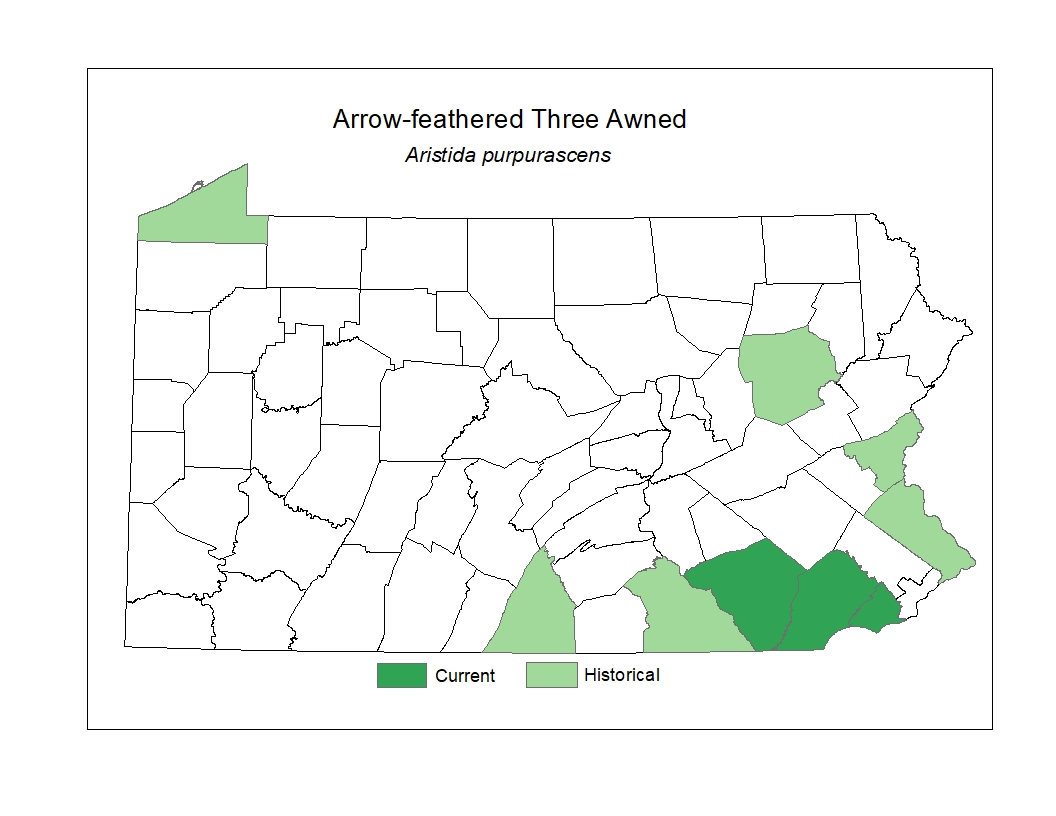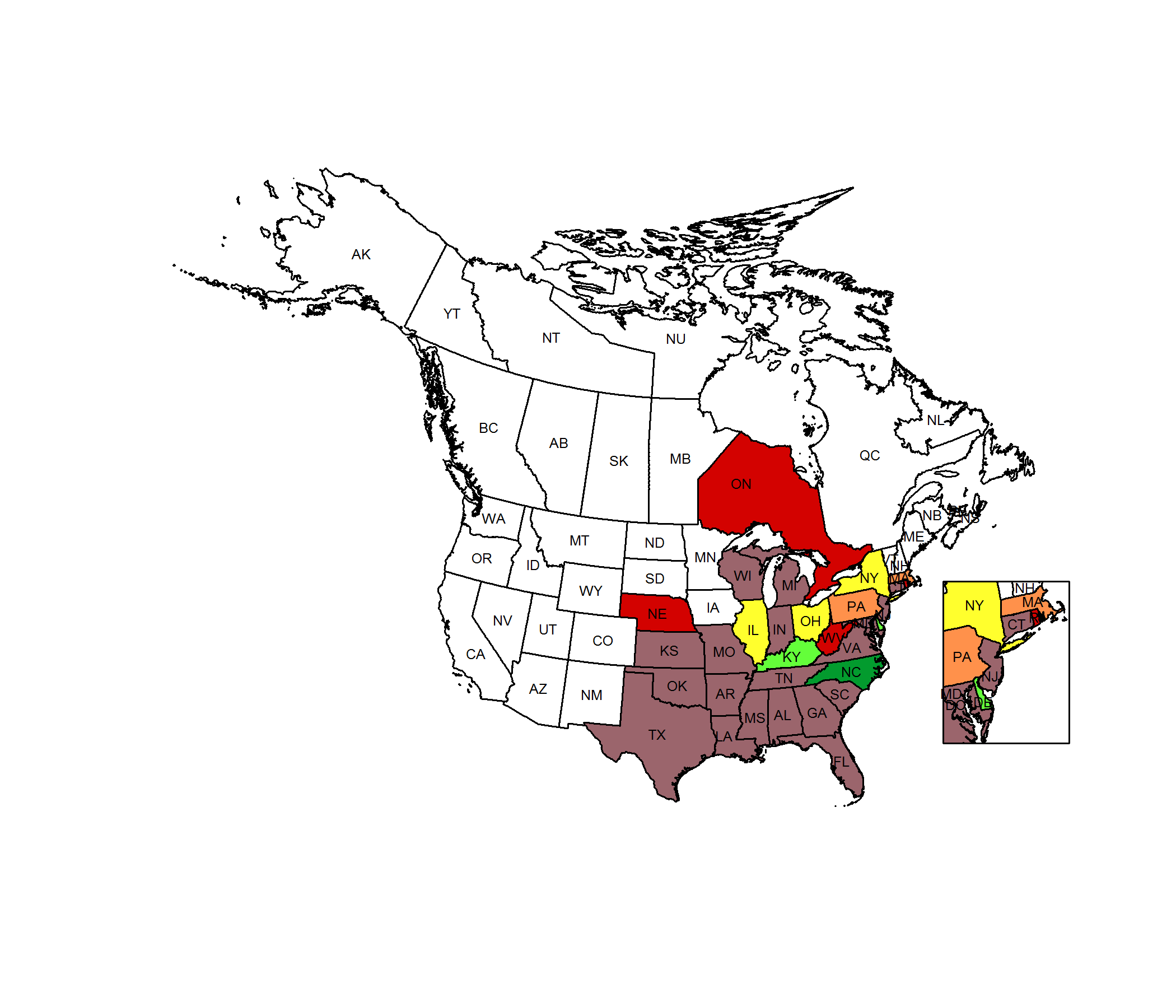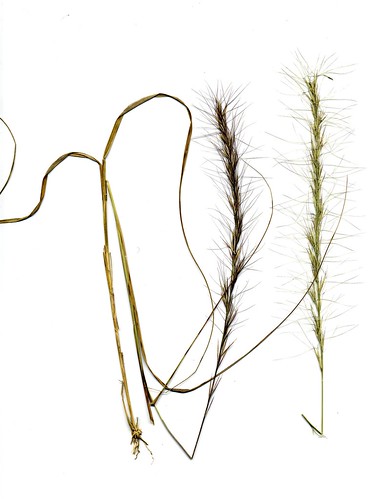 Species Factsheets
Species Factsheets
Aristida purpurascens
Arrow-feather Three-awned Grass
State Status: Pennsylvania Threatened (PT)
PBS Status: Pennsylvania Threatened (PT)
Federal Status:
Global Rank: G5
![]() rank interpretation
rank interpretation
State Rank: S2
Did You Know?
This species has some commercial uses inclduing latex (rubber), fiber, or even fuel.
Description
Arrow-feather three-awned grass (Aristida purpurascens) is a slender perennial grass that grows from 50-75cm high. The leaves are linear, elongate, less than 2mm wide and 10cm long. The individual flowers are in spikelets, with their most conspicuous feature being three hair-like projections, or awns, that are 1.5-2.5cm long protruding from the top of the spikelet, and are oriented more-or-less perpendicular to the spikelet. The overall cluster of spikelets, located on the middle and upper stem, has a bristly appearance due to these awns.
Rank Justification
Imperiled in the nation or state because of rarity due to very restricted range, very few populations (often 20 or fewer), steep declines, or other factors making it very vulnerable to extirpation from the nation or state.
PABS
The PA Biological Survey (PABS) considers arrow-feather three-awned grass to be a species of special concern, based on the few occurrences that have been recently confirmed and its specialized habitat. It has a PA legal rarity status and a PABS suggested rarity status of Threatened. Fewer than ten populations are currently known from the state.
Habitat
The species grows in dry to seasonally dry, open, rocky places, especially on serpentine barrens.
Survey Dates
Flowers August - September
Distribution
In Pennsylvania, it has been documented historically primarily in the southeastern counties.

Management
The populations of this species in the state are mainly on serpentine barrens and the seasonally scoured riverbed and shoreline rock outcrops along the lower Susquehanna River. The viability of the species on serpentine will require maintaining early successional, grassland conditions and controlling invasive species. The riverine populations will require maintaining the natural hydrology of the Susquehanna River, with its seasonal fluctuations in water levels, as well as retaining the natural conditions of the shorelines and islands.
Conservation Status Map

NatureServe. 2017. NatureServe Explorer: An online encyclopedia of life [web application]. Version 7.1. NatureServe, Arlington, Virginia. Available https://explorer.natureserve.org.
https://mnfi.anr.msu.edu/abstracts/botany/Asclepias_purpurascens.pdf
- NatureServe. 2018. NatureServe Explorer: An online encyclopedia of life [web application]. Version 7.1. NatureServe, Arlington, Virginia. Available at https://www.natureserve.org/explorer
- Pennsylvania Natural Heritage Program. 2018.
- Rhoads, A.F. and W.M. Klein, Jr. 1993. The Vascular Flora of Pennsylvania. American Philosophical Society, Philadelphia, Pennsylvania. Rhoads, A.F. and T.A. Block.
- 2007. The Plants of Pennsylvania: An Illustrated Manual. 2nd edition. University of Pennsylvania Press, Philadelphia, Pennsylvania.







